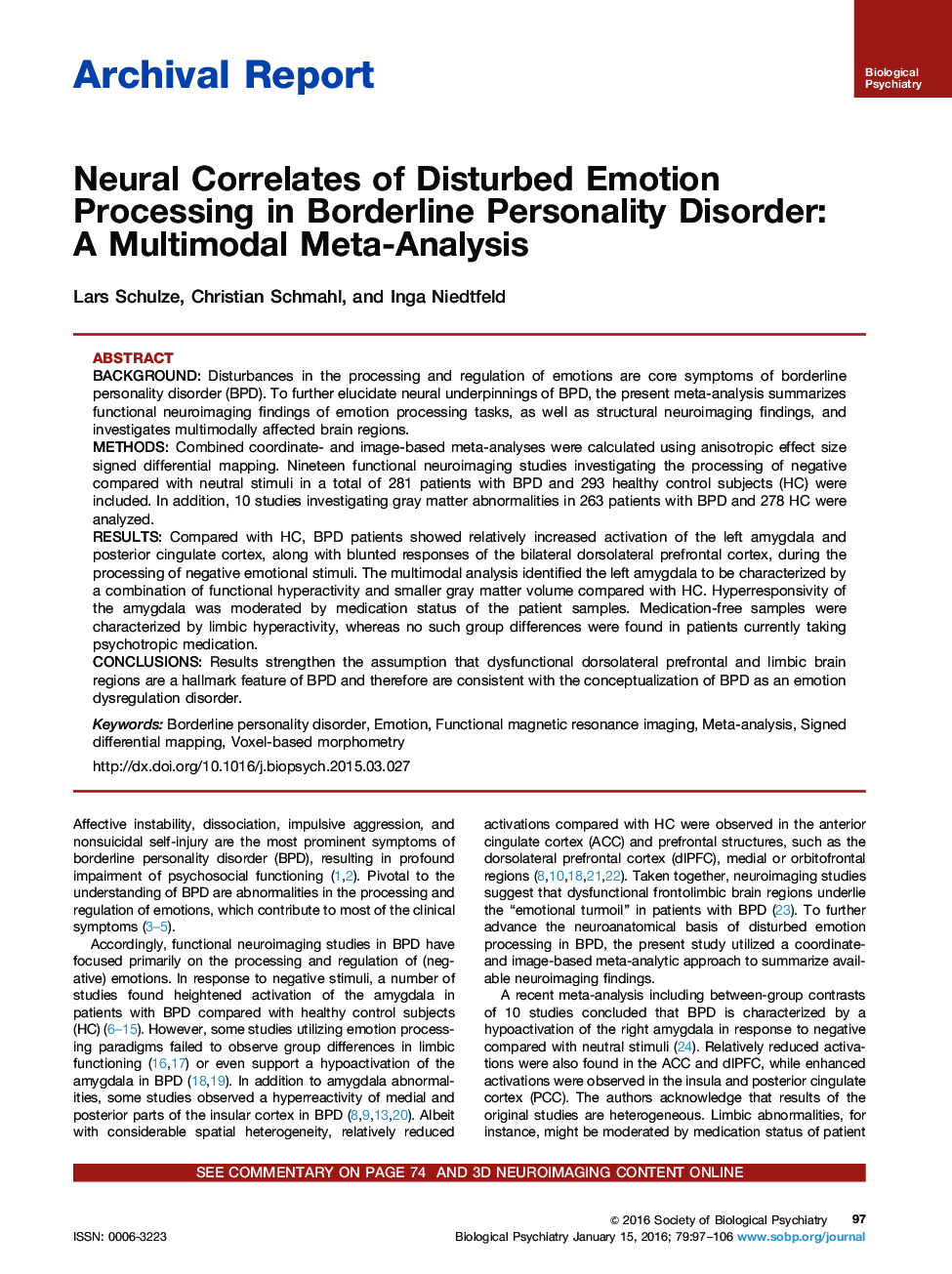| Article ID | Journal | Published Year | Pages | File Type |
|---|---|---|---|---|
| 4177191 | Biological Psychiatry | 2016 | 10 Pages |
BackgroundDisturbances in the processing and regulation of emotions are core symptoms of borderline personality disorder (BPD). To further elucidate neural underpinnings of BPD, the present meta-analysis summarizes functional neuroimaging findings of emotion processing tasks, as well as structural neuroimaging findings, and investigates multimodally affected brain regions.MethodsCombined coordinate- and image-based meta-analyses were calculated using anisotropic effect size signed differential mapping. Nineteen functional neuroimaging studies investigating the processing of negative compared with neutral stimuli in a total of 281 patients with BPD and 293 healthy control subjects (HC) were included. In addition, 10 studies investigating gray matter abnormalities in 263 patients with BPD and 278 HC were analyzed.ResultsCompared with HC, BPD patients showed relatively increased activation of the left amygdala and posterior cingulate cortex, along with blunted responses of the bilateral dorsolateral prefrontal cortex, during the processing of negative emotional stimuli. The multimodal analysis identified the left amygdala to be characterized by a combination of functional hyperactivity and smaller gray matter volume compared with HC. Hyperresponsivity of the amygdala was moderated by medication status of the patient samples. Medication-free samples were characterized by limbic hyperactivity, whereas no such group differences were found in patients currently taking psychotropic medication.ConclusionsResults strengthen the assumption that dysfunctional dorsolateral prefrontal and limbic brain regions are a hallmark feature of BPD and therefore are consistent with the conceptualization of BPD as an emotion dysregulation disorder.
